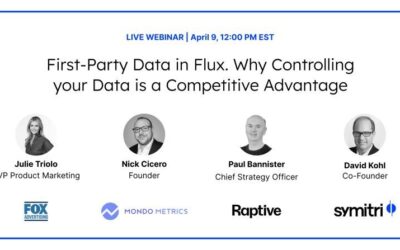Video Podcast Analytics 101
Video podcasting has transformed dramatically from a simple audio medium into a robust multi-platform ecosystem. Creators who once focused solely on audio content now find themselves managing content across Spotify, YouTube, and various social media channels. This expansion offers incredible opportunities to reach new audiences but introduces a complex challenge: how to effectively measure performance across multiple platforms.
The Challenge of Podcast Analytics
Historically, podcast analytics were straightforward. Platforms provided basic metrics, like downloads and plays, offering enough insight to gauge listener interest. Today, creators face the complexity of video, audio, and social metrics scattered across different platforms. Spotify and YouTube, two primary distribution points for video podcasts, offer powerful but distinct analytic tools, leaving creators juggling fragmented data.
Spotify Analytics: A Deep Dive
Spotify’s analytics are accessed through Spotify for Podcasters, offering creators valuable insights into audience behaviors and engagement.
Plays (Streams)
On Spotify, a play is counted when an episode has been listened to for at least 60 seconds. This metric serves as a primary indicator of your episode’s reach. High play counts reflect strong audience interest, but it’s crucial to analyze plays alongside other metrics to fully understand engagement.
Unique Listeners
Unlike plays, unique listeners reflect distinct individuals who interact with your podcast. This helps gauge actual audience growth beyond just the number of plays. Tracking this monthly can reveal patterns and inform future content strategies.
Followers
Spotify followers are analogous to subscribers on other platforms—your most loyal listeners. An increasing follower count indicates your content resonates deeply with listeners, encouraging repeated engagement.
Viewers & Watch Time
For video podcasts specifically, Spotify tracks unique viewers (those watching at least 60 seconds) and total watch hours. High viewers but low watch hours might indicate that content initially attracts but fails to sustain viewer interest—highlighting areas for potential improvement.
Audience Retention
Retention metrics offer a detailed look at listener engagement throughout an episode. Spotify’s retention graph pinpoints where listeners drop off, allowing creators to identify and adjust problematic segments. High retention is an excellent indicator of compelling content.
Impressions and Discovery
Spotify shows how often your content appears (impressions), how frequently these impressions convert into episode plays, and where these impressions originate (Home, Search, Charts). Low conversion rates might signal the need to refine your episode titles or thumbnails.
Engagement Features
Spotify’s engagement metrics are uniquely interactive, including polls and Q&A tools. High participation rates in these features indicate strong audience engagement, providing qualitative feedback directly from listeners.
Demographics
Spotify provides comprehensive demographic data such as listener age, gender, and geographic location. This information helps tailor your content to better resonate with your audience’s interests and preferences.
Improving Content with Spotify Insights
Regular review of these metrics after each episode can significantly enhance your content strategy. For instance, episodes with high follower conversions highlight successful formats or topics, guiding future content decisions.
YouTube Analytics: Understanding Viewer Behavior
YouTube analytics via YouTube Studio offer deep insights into video podcast performance, making it a crucial tool for creators.
Views and Watch Time
Views measure basic reach, but watch time provides deeper engagement insights, significantly influencing YouTube’s algorithm. Maximizing watch time through engaging content improves overall channel visibility.
Audience Retention
YouTube’s retention graphs are powerful tools for visualizing viewer engagement over the duration of videos. Sharp drop-offs help identify specific content issues, allowing for informed adjustments in future episodes.
Average View Duration and Percentage Viewed
These metrics summarize viewer engagement, helping creators understand how effectively they retain attention. Increasing average view duration typically enhances a video’s algorithmic visibility.
Click-Through Rate (CTR)
CTR evaluates the effectiveness of your video’s thumbnail and title at converting impressions into views. Optimizing these elements based on CTR analytics can significantly boost your video’s reach.
Engagement Metrics
Likes, comments, shares, and subscriber growth are crucial indicators of how much your content resonates with viewers. Encouraging interaction boosts algorithmic performance and builds community.
Traffic Sources
Analyzing traffic sources reveals how viewers discover your videos, whether through search, suggested videos, or external sites. Optimizing for successful sources enhances discoverability and growth.
Audience Demographics
Demographic data informs creators about their audience composition, allowing targeted content adjustments to better suit viewer preferences and maximize engagement.
Leveraging YouTube Analytics for Growth
Utilizing these insights strategically can transform your content approach. For example, refining video titles or thumbnails based on CTR data or adjusting episode lengths using retention graphs directly impacts performance.
Bridging Platforms with Mondo Metrics
Native platform analytics from Spotify and YouTube offer invaluable but isolated insights. Mondo Metrics addresses this fragmentation by aggregating data across platforms into a unified dashboard.
Cross-Platform Aggregation
Mondo Metrics provides a comprehensive view by combining Spotify plays, YouTube views, and social media interactions into total episode impressions. This unified metric gives creators a clearer picture of their true reach and audience engagement.
Unified Insights and Comparisons
Mondo Metrics enables direct cross-platform performance comparisons, revealing insights that individual platform analytics might miss. For example, identifying whether YouTube viewers demonstrate higher engagement than Spotify listeners.
Advanced Content Tagging
AI-driven tagging categorizes episodes automatically by topic, guest, or format, enabling detailed performance analysis. Creators can quickly identify successful content categories or formats to inform future planning.
Custom Metrics and KPIs
Mondo Metrics allows creators to define personalized performance indicators like combined engagement scores or total cross-platform impressions, tailoring analytics precisely to strategic goals.
Social and Web Integration
Beyond Spotify and YouTube, Mondo integrates data from social platforms and websites, offering a holistic view of your content’s digital footprint. This comprehensive insight helps correlate social media activities with podcast performance.
Actionable Insights and Recommendations
Mondo Metrics highlights actionable insights, helping creators quickly identify opportunities for content improvement or promotional strategy adjustments based on aggregated data patterns.
Best Practices for Maximizing Analytics
Effectively leveraging analytics across Spotify, YouTube, and Mondo Metrics involves several best practices:
- Regular Data Reviews: Establish consistent intervals (weekly/monthly) to analyze data, ensuring timely adjustments and continuous improvement.
- Comparative Analysis: Regularly compare performance across platforms to identify trends and inform strategic decisions.
- Action-Oriented Strategy: Use analytics insights proactively, making informed content, promotional, and engagement strategy adjustments based on performance data.
- Audience Engagement: Prioritize community building through interactive features and social media engagement to deepen audience loyalty and encourage organic growth.
- Experimentation: Continuously test new formats, lengths, and promotional techniques, evaluating their impact through detailed analytics to refine your approach continuously.
Conclusion: Creating a Data-Driven Podcast
In today’s competitive landscape, successful podcasting demands a data-informed strategy combining artful content creation with rigorous analytics. Native analytics from Spotify and YouTube offer crucial platform-specific insights, but integrating these with video podcast analytics platforms like Mondo Metrics provides a holistic view essential for strategic growth. Embracing a cycle of data-driven refinement—collecting, interpreting, acting, and iterating—ensures your podcast remains engaging, relevant, and continually growing across all platforms.



